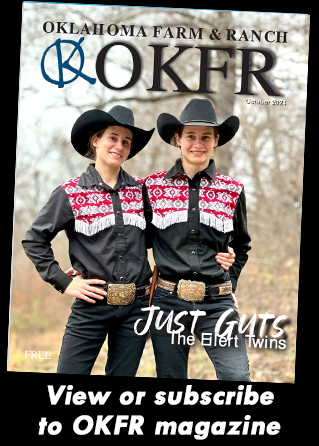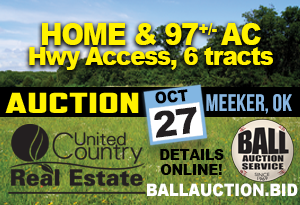Farm & Ranch
Cattle Nematodes (Worms)

Barry Whitworth, DVM | Senior Extension Specialist | Department of Animal & Food Sciences
According to the Mesonet, Oklahoma received some much-needed rain in late April (2023). With the moderate temperatures and high humidity, the environment is perfect for the proliferation of gastrointestinal nematodes (GIN) which are commonly called “worms.” Cattle can be infected with a variety of GIN. Most do not cause issues unless husbandry practices are poor. However certain GIN have been associated with disease. The most pathological GIN in cattle is Ostertagia ostertagi. Cooperia species and Haemonchus species are two that have been implicated with production issues. Control of these parasites is constantly changing due to environment, anthelmintic (dewormer) resistance, and consumer preference. Cattle producers should develop a plan to manage these parasites.
In order for GIN to complete their life cycle, certain environmental conditions must exist. The development stage begins with passing of the egg in the feces of the animal. If the egg is to hatch, the temperature must be warm and the humidity needs to be close to 100%. Ideal temperature ranges from 70⁰ to 80⁰ Fahrenheit (F), but any temperature above 45⁰ F will allow for development. Temperatures above 85⁰ F or below 45⁰ F will begin to hamper development. Humidity needs to be 80% or higher.
Once the egg hatches, the larva goes through a couple of molts to reach the infective stage which is the third stage larva (L3). L3 must have moisture to free itself from the fecal pat. Once free, it rides a wave of water on to a blade of forage. Once ingested, this begins the prepatent or pre-adult stage. Two molts take place during this stage (L3 to L4 and L4 to L5). If conditions are not favorable for survivability of offspring, L4 will go into an arrested development stage (hypobiosis) for a period of time. The patent or adult stage is the mature breeding adult.
Once inside the body, the parasite will migrate to certain locations in the digestive tract. For example, O. ostertagi develop in the gastric gland in the abomasum. H. placei and H. contortus will migrate to the abomasum. Cooperia species will live in the small intestine. A few like Trichuris (whipworms) are found in the large intestine.
Clinical signs of parasitism vary according to the species of parasite, burden, and site of attachment. Severe disease, which is referred to as parasitic gastroenteritis (PGE), with internal parasites is unusual with today’s control methods. Clinical signs of PGE are lack of appetite, weight loss, weakness, diarrhea, submandibular edema (bottle jaw), and death. However, most parasite infection are subclinical which means producers do not see clinical signs of disease. In subclinical infections, the parasite causes production issues such as poor weight gain in young cattle, reduced milk production, and lower pregnancy rates.
Producers should be monitoring their herds for parasites throughout the year but especially in the spring when conditions are ideal for infection. A fecal egg count (FEC) is a good way of accessing parasite burdens. Livestock producers need to gather fecal samples from their herd periodically. The samples should be sent to their veterinarian or a veterinary diagnostic lab. Different techniques are used to access the number of eggs per gram of feces. Based on the counts, the producer will learn the parasite burden of the herd. Producers can use this information to develop a treatment plan.
In the past, GIN control was simple. Cattle were routinely dewormed. Unfortunately, anthelmintic resistance has complicated parasite control. Now proper nutrition, grazing management, a general understanding of how weather influences parasites, biosecurity, refugia, anthelmintic efficiency, and the judicious use of anthelmintics are important in designing an effective parasite management program. All of these considerations need to be discussed in detail with a producer’s veterinarian when developing a plan for their operation.
Cattle producers need to understand that parasites cannot be eliminated. They must be managed with a variety of control methods. Designing a parasite management plan requires producers to gain a general understanding of life cycle of the parasite as well as the environmental needs of the parasite. Producers should use this information as well as consult with their veterinarian for a plan to manage GIN. For more information about GIN, producers should talk with their veterinarian and/or with their local Oklahoma State University Cooperative Extension Agriculture Educator.
References
Charlier, J., Höglund, J., Morgan, E. R., Geldhof, P., Vercruysse, J., & Claerebout, E. (2020). Biology and Epidemiology of Gastrointestinal Nematodes in Cattle. The Veterinary clinics of North America. Food animal practice, 36(1), 1–15.
Navarre C. B. (2020). Epidemiology and Control of Gastrointestinal Nematodes of Cattle in Southern Climates. The Veterinary clinics of North America. Food animal practice, 36(1), 45–57.
Urquhart, G. M., Armour, J., Duncan, J. L., Dunn, A. M., & Jennings, F. W. (1987). In G. M. Urquhart (Ed). Veterinary Helminthology. Veterinary Parasitology (1st ed., pp 3-33). Longman Scientific & Technical.
Country Lifestyle
December 2017 Profile: John Jennings
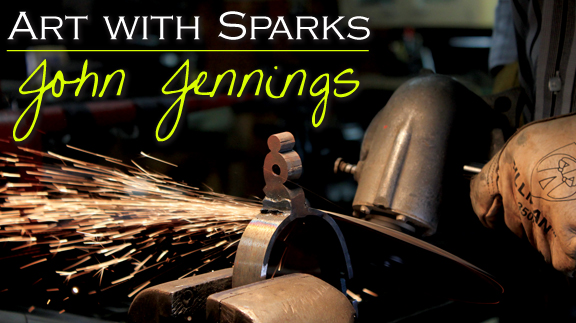
By Laci Jones
Raised under the city lights of California, John Jennings is not your typical Californian. Born in El Centro, Calif., Jennings considered himself a “redneck,” spending many days hunting and fishing on the many California golf courses in Palm Springs, Calif.
“I would get kicked out of golf courses,” he said followed by a chuckle. “The security guards would run us off, and we would go to a different one.”
He was always “tinkering” with knives, guns and other items. Jennings recalled using circular saws as a child, saying it was “second nature.” At 17 years old, he dropped out of high school and began working full-time. Like his father, Jennings worked in construction.
“I was making $500 per week 30 years ago, which was pretty good money,” Jennings explained. “I moved out to my own apartment and just started doing my thing. Looking back, I wish I had gone to school because my son’s going to Oklahoma Baptist University, and he’s got so many opportunities.”
Jennings “bounced around” from job to job, never working at the same place for more than 18 months. His career took a backseat when he was diagnosed with Idiopathic thrombocytopenic purpura in his mid-20s. ITP is an auto-immune disease where the immune system sees blood platelets as foreign object.
“We were fixing to deer hunt out in the desert,” Jennings began. “I had these big ole bruises, and I didn’t think much of it.”
Jennings chalked the bruises up to clumsiness, but his wife suggested he visit the doctor to be sure. After his results came in, his doctor told him he needed to stay home, but Jennings was in denial.
“I felt 100 percent perfect. There’s nothing wrong with me,” he said. “I said, ‘No, I’m going deer hunting.’” They said, “Well, go ahead, but even a jar against a seatbelt could kill you.”
Jennings underwent many surgeries and chemotherapy treatments as well as took a daily concoction of pills to cure ITP. One chemotherapy treatment increased his appetite, causing his weight to rise to 250 pounds.
“I did this for like three years, and it finally just went away,” Jennings added. “By the grace of God, it went away.”
The southern California native said the experience changed his outlook on life. Ten years ago, Jennings and his family moved to Shawnee, Okla. He said the expense, traffic, regulations and the mounting doctor bills as well as his parents’ influenced his decision to relocate to the Sooner state.
“My parents wanted out of California 30 years ago, so they headed east on I-40 to look around,” he explained. “They originally were going to look in Arkansas, but they got stuck in a hail storm in Shawnee and stayed the night.”
Jennings said he lived in Shawnee, Okla., when he was eight years old, but moved back to California following the oil crash in the ‘80s. His parents later retired in Oklahoma.
“When I was kind of fed up with California too, my mom called and said, “There’s this really cute little house right across the street,” Jennings recalled. “It was a dump. My wife cried when she first saw it.”
Moving to Pottawatomie County allowed the California native to meet Bill Madole, a local bit and spur maker and neighbor of the Jennings family. Madole owned the land adjacent to Jennings, which overlooked the North Canadian River.
“[Madole] owns three corners of this river,” Jennings explained. “Once I found that out, I thought, “Man, I would like to hunt that.”
Jennings worked out a trade with the landowner for hunting privileges. The construction worker completed projects like fixing Madole’s roof or installing a new door. Jennings began watching Madole work and thought it would be “cool to try.”
Jennings was quickly discouraged once the talented blacksmith told him how much the equipment cost. After, he didn’t give spur making as a side-business another thought. Then things changed. Four years ago Madole was preparing to leave for the National Finals Rodeo where he had a booth.
“I said, ‘I’ll help you get ready for the NFR, and you show me how to make spurs,’” Jennings recalled. “He was sitting there, engraving while we were talking, and he said, ‘okay.’”
The apprentice was tasked with filing spur rowels, which he described as “monotonous” tasks. He continued to learn from the expert, copying his style of spur making.
“We do what is called ‘Texas-style spurs,’” Jennings explained. “The Texas-style is a bit more utilitarian than the Mexican or California-style spurs.”
The Mexican and California-style spurs are more ornate with more silverwork, and they have a larger rowel than the Texas-style, he added. The Texas-style is more subdued. Jennings said he did not experiment with other styles, contributing most of his influence from his teacher.
“I rely heavily on his style because, to me, that’s how it gets passed down,” he stated. “There’s a guy named Kevin Burns whose spurs are pretty expensive. He learned from a guy named Jerry Cates. If you look at a Burns spur, it looks a whole lot like Cates.”
Jennings said the same could be said of Billy Klapper, who learned from the “Godfather” of Texas-style spurs, Adolph Bayers.
“I remember I sold a couple pair to a guy in Stillwater, Okla., who was a trader,” he recalled. “He was carrying a pair of mine around a big spur show in Abilene, Texas. Another spur maker said, ‘Oh, you’ve got a pair of Madole spurs,’ and he said, ‘No, this is Jennings’ spurs, but he learned from Madole.’ This is how distinctive my buddy’s style is.”
He said the distinction of the spurs could be seen in the details. Many spur makers do not engrave in the steel, but Jennings and Madole make individual cuts in the steel to create a distinct design. Also, the area between the band and the shank is squared off, which requires more effort.
While he is inspired by Madole’s work, Jennings also has more resources available than his mentor had.
“I look all the time on the Internet, seeing what’s out there and getting ideas,” Jennings explained. “If [Madole] wanted to see spurs, he had to drive to Amarillo, Texas, to a show. I think it’s just easier for people to get started across the board nowadays.”
Jennings said he never thought he would pick up the art of spur making because his background did not include horsemanship. The spur maker sent a pair he was proud of to a friend, who took them to a horseman. The horseman complimented the spurs, and Jennings’ friend mentioned he does not ride horses. The horseman said, “Well, that’s kind of a fraud.”
“My take on it is the guy who builds NASCAR cars probably can’t drive them or a pilot does not work on the airplane that you’re flying across the country,” the spur maker explained. “A good horseman does not equate to being able to do silverwork and vice versa.”
Jennings said his first pair of spurs were “good” for a first pair, but overall, they are “okay.”
The spur maker has improved since then, stating a good set of spurs takes time and attention to detail. Lately, Jennings has been inspired by old-fashioned designs including the 100-year-old design, gal-leg spurs.
“The gal-leg spurs are a really old-fashioned patterned, but every guy has to draw his own,” he explained. “Every guy’s gal-leg spurs are a little bit different.”
On average, Jennings spends 20 to 100 hours on a pair of spurs. The process begins with design. His background in sculpting ceramics helped him become the spur maker he is today.
Jennings traces his new designs on paper, then copper before cutting it out. The design is traced on the steel, which is then cut with a bandsaw. Once the bands are cut, the spurs are placed in the forge until the metal is red-hot. They are then formed into the shape of a spur. Then the shank is welded to the band and filed to smooth out any indentions.
The design for the silver is planned, then cut with a small saw and soldered on the spur. Once the spur maker cleans the spur, it is ready for engraving.
“It’s like another well-known spur maker said, ‘You want to have a really nice, delicious cake,’” Jennings explained. “The metaphor is about having a real quality spur before you ever put silver or engraving on. The decoration is just that, the icing on the cake.”
Jennings said what differentiates his and Madole’s spurs from other spur makers is their spurs are sterling silver mounted while others use nickel silver. For a swan-design spur, Jennings uses 925 silver or pure silver, which is considered more malleable than other metals.
In the past four years, the spur maker has completed more than 50 projects ranging from buckles to spurs. While buckles take less time, his spurs earn Jennings more money. His spurs cost anywhere from $650 to $2,500. Jennings has also competed in spur shows, stating winning is what drives him forward.
“When I’m sitting here, thinking filing on all of these spurs sucks, I think about how I want to win,” the spur maker commented. “That’s why I do it. That’s what keeps me going.”
Jennings earned the first place prize at the Cowboy True Art Show in Wichita Falls, Texas, and plans to compete again next year.
The spur maker attributed his patience to listening to old outlaw country including Waylon Jennings and George Jones while working on projects. He is currently working on spurs featuring a horse head, which he has invested 20 hours in thus far.
Jennings still works in construction full-time. However, he said rainy days and other construction delays allow him ample time to devote to his craft.
Jennings still lives in Shawnee, Okla., with his wife, Candace, who also helps contribute to his side-business. Together, they have four children ranging from ages six to 26—Char, John, Kate and Ella.
When asked what advice he would give to a new spur maker, he referred back to the advice given by his mentor.
“[Madole] told me a while back, ‘Slow down, do a nice job, which we both know that you can do,’” he recalled. “Don’t be in such a hurry.”
To order, call 405-249-6920 or email [email protected].
This article originally appeared in the December 2017 issue of Oklahoma Farm & Ranch.
Farm & Ranch
Disaster Prep
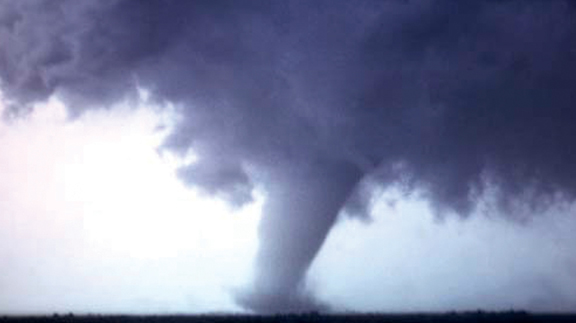
By Barry Whitworth, DVM
Chances are that livestock producers at some time or another will be affected by a disaster such as a flood, tornado, drought or wildfire. Whatever the disaster, the challenge of any producer is to take care of their animals. Unlike small animals, farm animals tend to be large and require special needs in an emergency. For this reason, it is important to take the time to prepare a “Disaster Preparedness Plan.”
The plan will hopefully create a step-by-step set of guidelines to follow during a chaotic situation that will keep both animals and humans safe. In any disaster situation, the most important thing for a producer is to ensure above all else that his/her family and life come first. A producer should never attempt to risk his/her life or a member of their family’s life to save the life of an animal.
The start of a good disaster preparedness plan begins with evaluating what are the most likely disasters that a ranch or farm might face. For example, a ranch in the far eastern part of the state may not spend as much time with drought preparation as a ranch in the western part of the state. All producers should take the time to research history and look at weather patterns to understand the most likely disasters they could face.
Next, the producer should evaluate their premises to determine the potential risk to the animals. For example, the producer may want to remove the animals from any area that falls in a flood plain during certain times of the year or have an evacuation plan ready in case of an emergency. One should also evaluate the structures on the property. Are the barns or sheds able to withstand strong winds or not? The answer to that question will determine if the animals will be kept in a barn or turned out in a pasture during a storm.
Stacks of lumber and/or tin should be tied down. This will prevent the material from being blown around and possibly injuring an animal. Areas around a barn should be kept mowed and free of dead debris. This will help reduce risk where there is potential for a wildfire.
These questions and more need to be addressed in preparing the plan.
A disaster preparedness plan should also include animal identification. All animals need some form of identification. Brands, microchips and tattoos make excellent identifications since they are more permanent than other forms. Pictures will help identify animals. The producer should have records of ownership in case animals are lost or die in the disaster. This will be important if the producer is receiving insurance or indemnity payments.
It is important to remember that during a disaster power and utilities may be lost. A livestock owner who relies on electricity for his/her animals will need to have a backup source of power. A seven to 10-day supply of feed and water should be kept on hand. Producers may want to prepare an emergency kit. Items that might be included in the kit are halters, ropes, feed buckets, medications, first aid supplies, cleaning supplies, flashlights, batteries, cell phone, radio, feed, hay, water and generator. These are just a few things that a producer might need in an emergency.
An evacuation may need to be part of a producer’s disaster preparedness plan. Moving large herds of animals is probably not feasible. However, producers may wish to evacuate a small number of animals that have exceptional genetics. If evacuation is an option, producers will need to prearrange for an evacuation site. They will need to establish a route.
The truck should be full of gas and the trailer hitched during unfavorable conditions. Producers need to leave early. A producer should keep in mind that traffic may be increased during a disaster. The last thing a livestock owner needs is to be caught in a disaster stuck on a highway.
The producers will need to take feed and hay or prearrange for delivery to the evacuation site. If the animals are to remain on the farm, the producer will need to establish an area that he/she feels is safest depending on what the disaster is. For example, a pasture with no trees would be safer than a pasture with a few trees that animals would congregate under during a severe storm.
Once the crisis is over, the owner should be prepared to deal with injuries and dead animals. Producers need to have a carcass disposal plan ready in advance. Producers need to check with the local and state officials about the laws for disposing of animals. Producers need to realize that there is a chance that some animals will need to be euthanized. Owners need to be prepared to euthanize or contact a veterinarian to this job.
Planning how to deal with a disaster is like writing a will. Most of us think that we have plenty of time to get it done later. Unfortunately, later usually comes earlier than we like, and we get caught in an emergency with no plan. If a producer would like more information about planning for a disaster, they should go to www.prep4agthreats or contact their local county educator.
This article originally appeared in the June 2018 issue of Oklahoma Farm & Ranch.
Farm & Ranch
The Barn
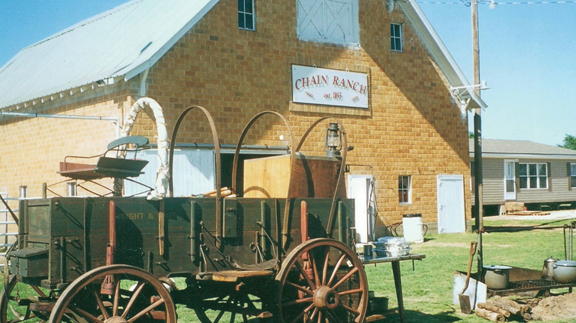
By Ralph Chain
In 1935 and 1936, when we used to work a lot of mules, my granddad and dad decided to build some mule barns. So, in 1935, we built the first barn where my dad lived and in 1936 we built a barn where my granddad lived. All the work on these barns was done by hand, back before we had cement mixers and the conveniences of life. The work was done by hoe or shovel.
Our neighbors, Sale and Dwight Bennett, and their dad, Claude, helped build the barns. The old man who laid the tile on the barn was Bill Hopper. He was an old bachelor and where he came from or where he went I do not know. But he stayed with my mother and father all during this time while building the west barn. It probably took two or three months to build a barn. He was particular about what he ate. My mother always had to cook for him, and she was glad to see him leave. He also laid the tile for my granddad’s barn. My grandmother cooked for him while he was building that barn.
We used the barn for mules until the late 1940s or early 1950s, when tractors took the place of our mules. I remember my dad trading a team of mules for a D John Deere tractor, which had steel wheel lugs on the back wheel, and you cranked it by hand. I think John Deere built these tractors and called them Argentine, because they were built for sale in Argentina.
When the mules left we converted the west barn. We took out the oat bins and mule stalls and moved our cattle working equipment inside the barn. Each barn had a long oat bin that ran the length of the barn. We filled these bins by scoop shovel with oats that were fed to our work mules.
We converted the east barn the same way but instead of moving our cattle working equipment I converted it to a sheep barn. We used to feed a lot of sheep, and we put the sheep feeders in the barn. Then we quit feeding sheep and the barn was converted into calving pens for our two-year-old heifers.
One day Newley, my grandson, approached me. He and Mandy Hill were getting married and he wanted to have the wedding in our converted school house. I asked him, “Why don’t you have your wedding in the barn?” He nearly fainted when I mentioned the barn. But I told him we would clean the barn up if he wanted to have the wedding there.
He needed to talk to Mandy’s mother, Glenda Hill, and see what she thought about it. She came and looked the barn over and said it if was cleaned up it would be all right. One of the biggest jobs was cleaning the hay out of the hay loft. Some of it had been there ever since the barn had been built. The only way to get it out was using pitchforks through a little door in the north part of the barn. It took three guys several months to get all the hay out of the loft.
It was amazing what they found in the hay. They found collars, harnesses and all kinds of mule and horse equipment. One of the main things they found was whiskey bottles, which had been hidden by some of the hands. They had hid them there because we didn’t believe in drinking.
Then the work started downstairs removing all the calving pens, and we poured a new cement floor. We got a steam cleaner and cleaned the walls, which helped a lot, and repaired some of the windows. On May 16, 1997, the wedding took place, and the reception was held in the hay loft. It went off great.
The barn has been used for all sorts of things from family reunions, hunting business, and special events for handicapped children. We have had people come from New York, California and even the Vice-President of Ecuador.
There is something always going on in the barn. The main event now is the Red Angus Sale that we have had for the past seven or eight years. There will be from 150 to 200 people in and out of the barn during the sale. Both barns are as good as they’ve ever been after 80 years. I don’t know of any other barns anywhere that are still standing after the horsepower went away and people starting using tractors. I can see no reason that the barns shouldn’t last another 80 years. Of course, a tornado or fire could destroy them in a matter of seconds.
Time changes things.
This article originally appeared in the September 2016 issue of Oklahoma Farm & Ranch.
-

 Attractions7 years ago
Attractions7 years ago48 Hours in Atoka Remembered
-

 Country Lifestyle1 month ago
Country Lifestyle1 month agoJuly 2017 Profile: J.W. Hart
-

 Country Lifestyle3 years ago
Country Lifestyle3 years agoThe Two Sides of Colten Jesse
-

 Outdoors7 years ago
Outdoors7 years agoGrazing Oklahoma: Honey Locust
-

 Outdoors4 years ago
Outdoors4 years agoPecan Production Information: Online Resources for Growers
-

 Equine7 years ago
Equine7 years agoUmbilical Hernia
-

 Farm & Ranch6 years ago
Farm & Ranch6 years agoHackberry (Celtis spp.)
-

 Equine4 years ago
Equine4 years agoOn the Road with Emily Miller-Beisel

